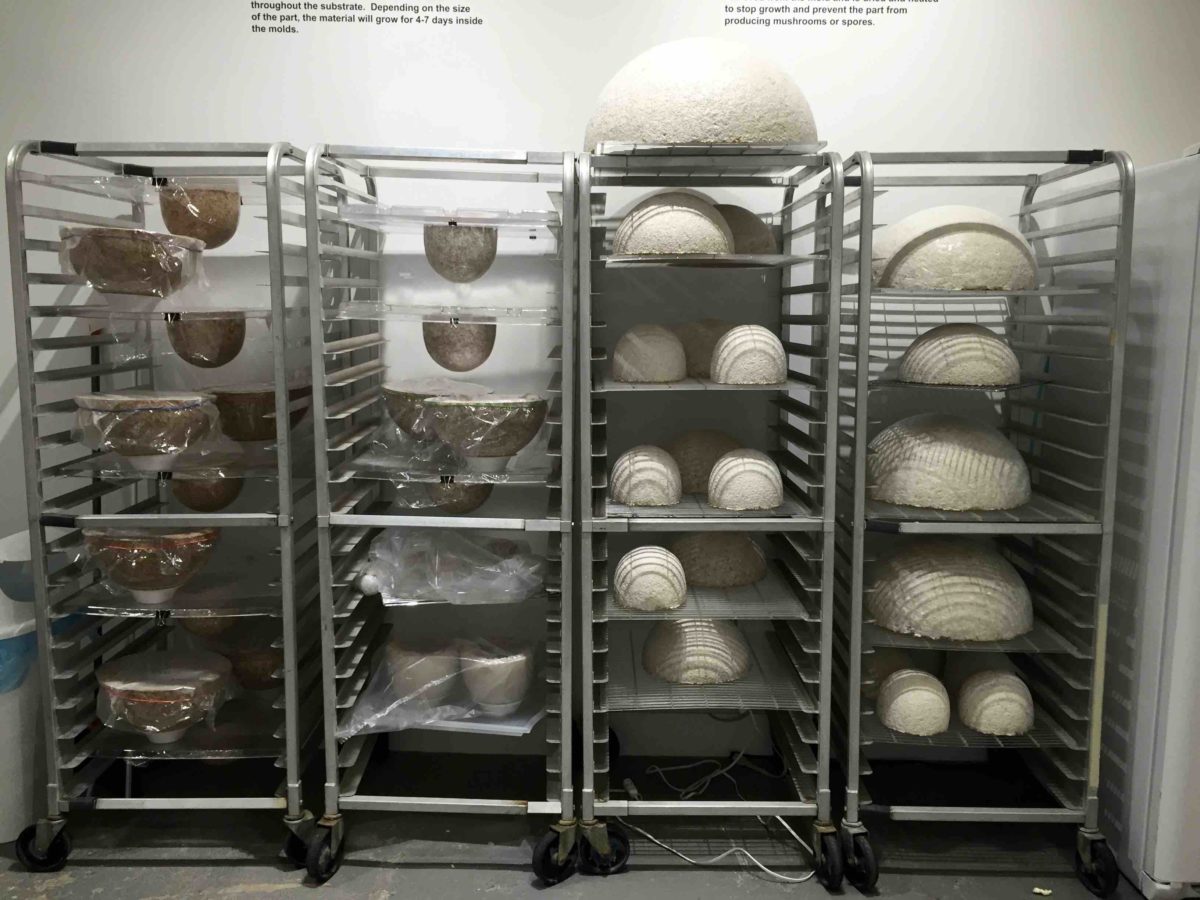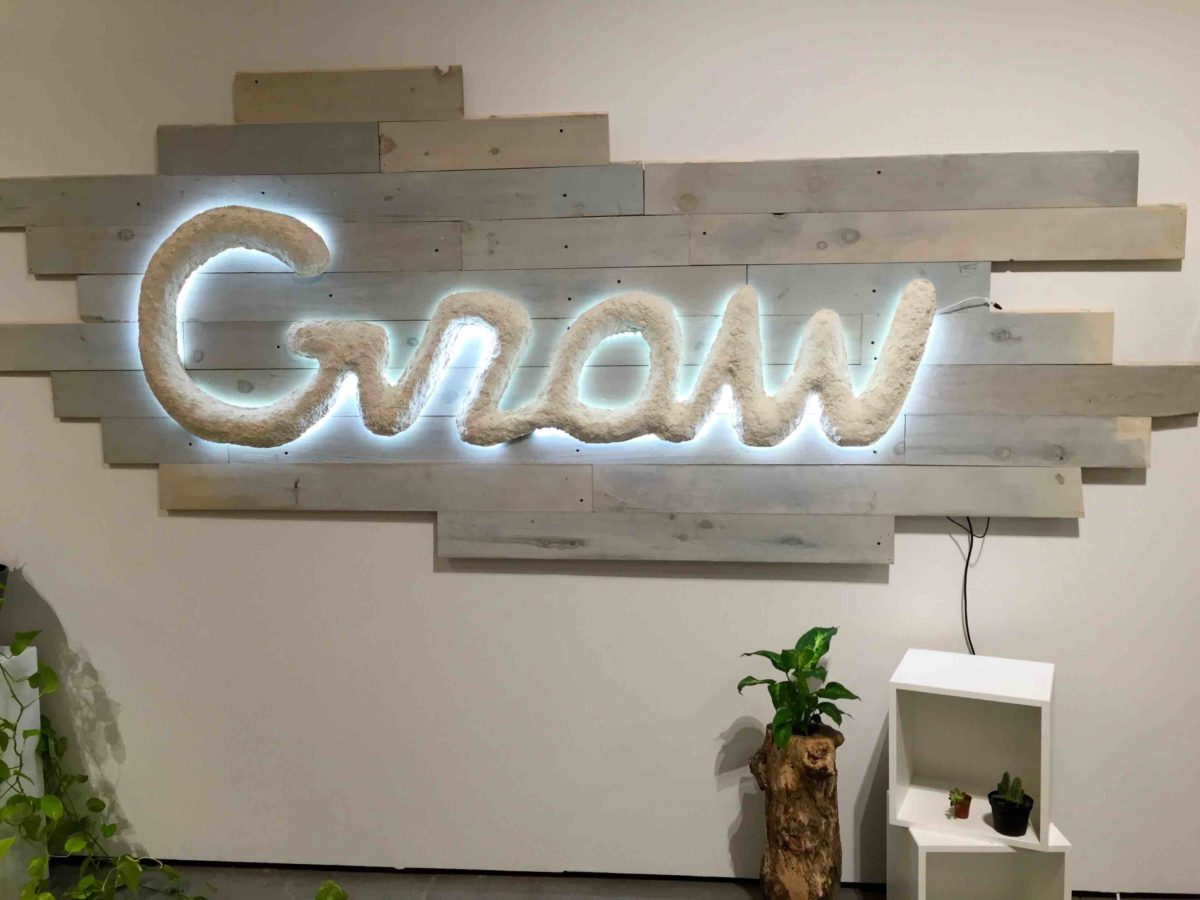Walking into Danielle Trofe’s bright, minimalist gallery in Industry City, you’re immediately struck by the display of lampshades throughout the room. They’re different shapes and sizes and appear to be made of plaster. Some feel like clay. Others feel, remarkably, like velvet.
But they’re all made from mushrooms. To be precise, it’s a mixture of mycelium — the filaments that make up the mass of a mushroom — and corn stalks and husks. The material is produced by Ecovative, a biomaterials company in Green Island, NY.
Trofe’s mushroom lampshades form the basis of her new lighting collection, called MushLume, now available on her website. Prices range from $250 up to $1,250 for the die-hard mushroom lampshade lovers. Later this year, she’ll be installing 100 of her lampshades at the new 1 Hotel Brooklyn Bridge. Trofe is currently in residence at Industry City, the Sunset Park industrial complex that’s angling to be tech hub, and for the rest of the month, her space will be open to the public to see her production in action.
She’s having a closing party on Thursday, Aug. 25.

Lampshades in various stages of production. (Photo by April Joyner)
Trofe first found out about Ecovative’s material three years ago. She’d always had an interest in sustainability: her first project in her studio, which opened five years ago, was a vertical hydroponic garden. The prospect of working with mushrooms quickly piqued her interest.
“As soon as I saw it, I knew I wanted to work with it,” she told Technical.ly when we visited her gallery yesterday during one of her public demos.
As it turns out, mycelium is having a bit of a moment. One artist even designed a wedding dress out of the material for her nuptials (although she ended up not walking down the aisle in it). But Trofe is more interested in getting the design community to think differently. She said she’s actively seeking ways to make industrial design friendlier to the environment.
“We’re really trying to send a message, alter an industry,” she said.
Trofe’s latest work has already gotten attention: she was a finalist for NYCxDesign’s award for table lighting in May.

Danielle Trofe with a piece from her collection. (Photo by April Joyner)
So how do mushrooms and corn stalks get transformed into an elegant lamp? The process starts off fairly high-tech: Trofe uses a MakerBot 3D printer to create silicone and rubber molds of the desired shapes for her lampshades. From there, though, it starts to look a little crunchy granola. To work with Ecovative’s material, she first has to add water and flour to nourish it so that the mycelium can grow.
Once the mushroom material is ready, Trofe packs it into the mold, where the mycelium grows according to the shape. The initial growth period takes four to five days. After the appropriate period has elapsed, Trofe removes the mycelium from the mold and places it under plastic, where it further thickens. After a day or two, she then bakes the fully matured lampshade in an oven at 200 degrees Fahrenheit, to stop further growth of the mycelium. It’s then ready for production, which includes painting and drilling.
Yesterday, Trofe walked participants through a simplified version of this process, making planters using a plastic food storage container as a mold. The procedure is a blend of science and art, which is something Trofe appreciates. Her work involves lots of familiarity with Autodesk and the latest developments in materials science.
“The geek in me loves that,” she said.
Yet in many ways, it’s akin to making pottery by hand.
“Genuine handcraft is still a part of the process that means something to me,” she said.
That may change somewhat if Trofe’s next plan comes to fruition.
“If we get an order for 5,000 parts, then we’ll start having to think differently,” she said.
Her goal is to make a strong retail push with MushLume. She’s hoping to eventually get her lamps into retail chains, and she said she’s currently in talks with a few.
Her upcoming hotel installation is her biggest commercial project for the collection so far. It’s a fully Brooklyn collaboration, with 1 Hotel Brooklyn Bridge as the client, Trofe’s Industry City gallery as the site of production and MetroTech-based MakerBot providing an assist. That’s something Trofe relishes, she told Technical.ly.
“It’s nice to have several layers of Brooklyn in this project,” she said. “I hope it encourages more relationships between Brooklyn and New York City-based businesses. And it’s a good way of keeping manufacturing in the area.”
Join our growing Slack community
Join 5,000 tech professionals and entrepreneurs in our community Slack today!
Donate to the Journalism Fund
Your support powers our independent journalism. Unlike most business-media outlets, we don’t have a paywall. Instead, we count on your personal and organizational contributions.
